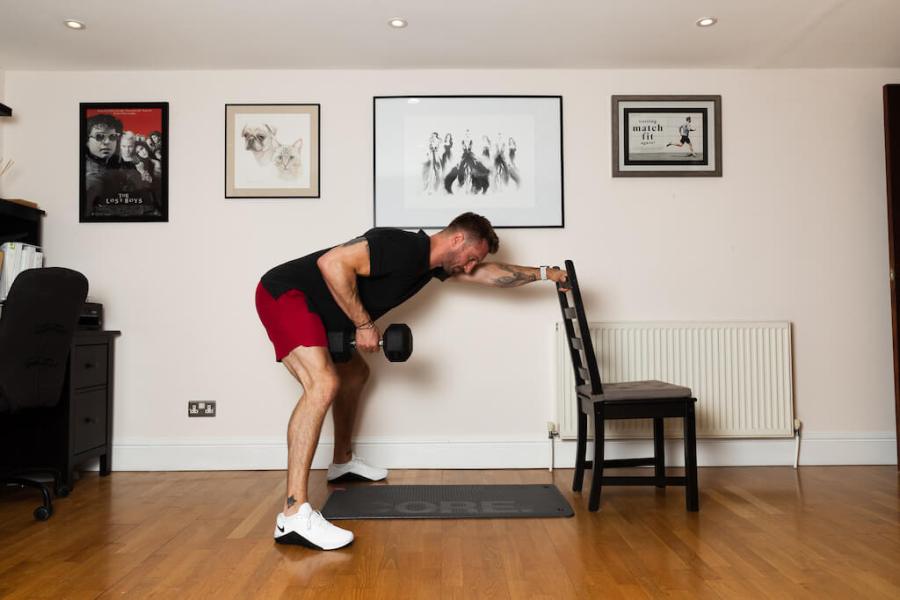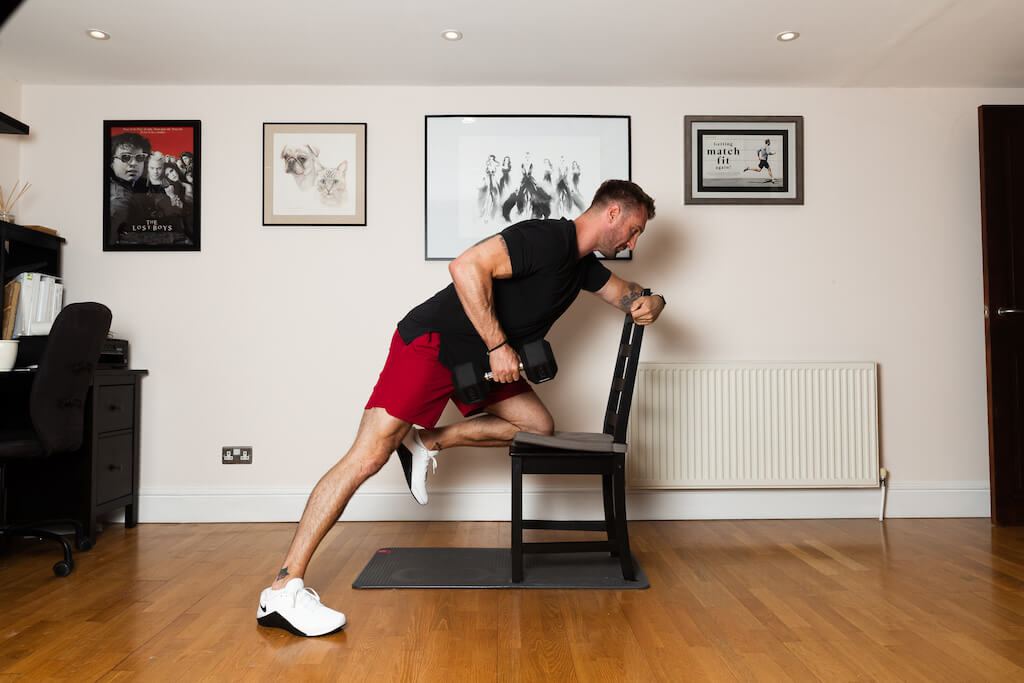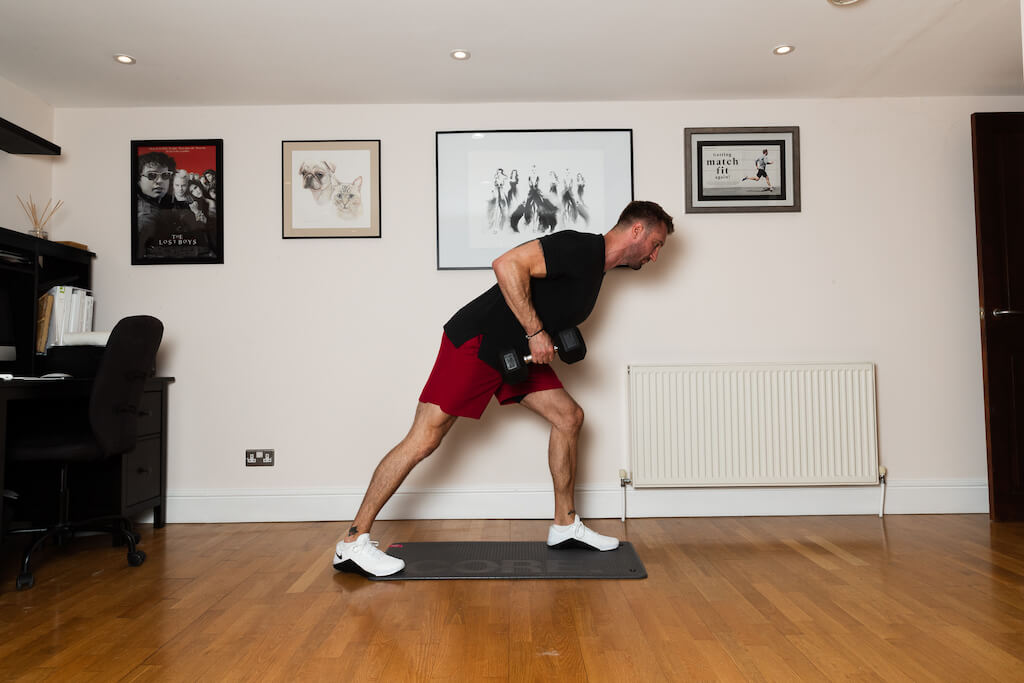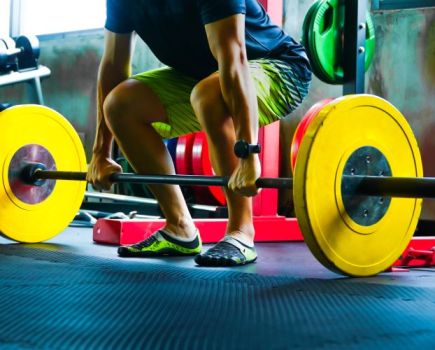Progressive overload is the principle of increasing demands to continue to see gains, but if you don’t have heavier weights at your disposal there are other tactics you can employ…
1. Mechanical Progressions
“Within the same category of movement, it’s possible to progress the mechanics of certain exercises,” explains elite performance specialist Luke Worthington.
“Generally we do this by removing points of contact, so for example a chest-supported row becomes a single-arm row, becomes a three-point row, becomes a two-point row.
“Similarly, a split squat becomes a Bulgarian split squat, becomes a reverse lunge, becomes a forward lunge.
The progression from split squat to Bulgarian is straightforward, as elevating the rear foot distributes more weight over the front leg, then a reverse lunge adds a dynamic element to the movement, and finally a forward lunge means managing deceleration and change of direction.
Despite the walking lunge being the most advance movement, it’s often given to beginners and in bootcamp workouts simply because its ‘hard’.”
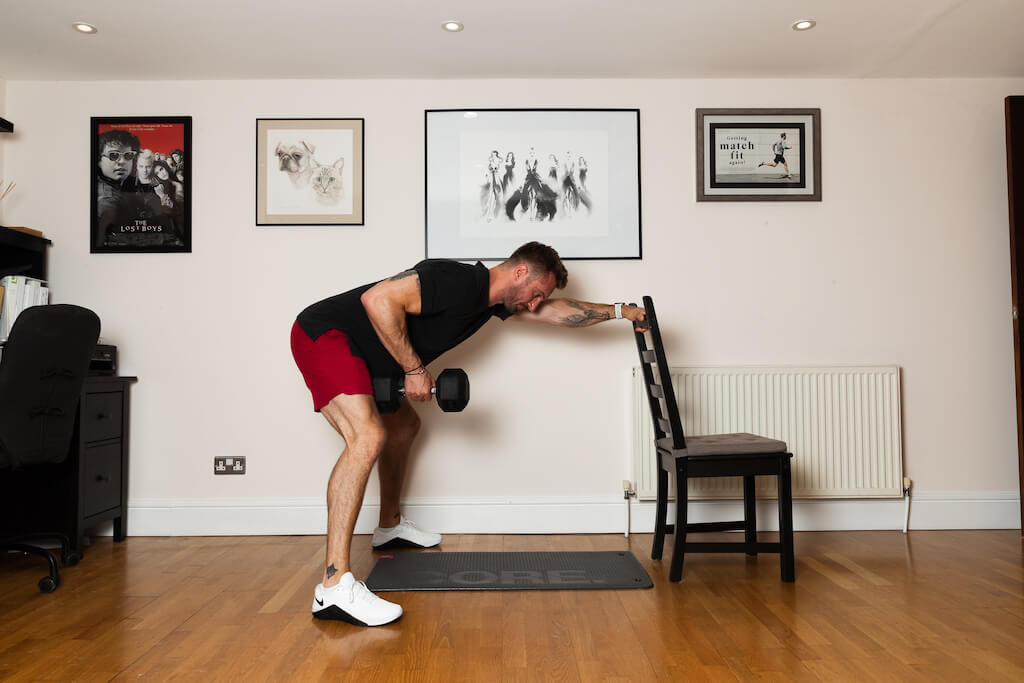
Single-arm row, to two-point row, to three-point row
2. RPE Progressions
“Performing the same exercise with the same weight, but achieving a lower RPE (rate of perceived exertion) is a way of marking progress,” adds Worthington.
“Why not challenge yourself to perform the same movement with cleaner and more proficient technique, while lowering your RPE?”
3. Density Progressions
“Finally,” says Worthington, “the ‘density’ of a training session is measured by the number of sets completed within a set period of time.
“So rather than simply adding sets and reps to make the session longer, you can progress by keeping the same time limit but trying to achieve an additional set within the same period.”
Photography: Keaton Chau
Model: Luke Worthington

